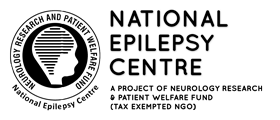Epilepsy is one of the most common brain disorders affecting about 50 million people worldwide. Our brain sends electrical commands to our body which then acts accordingly. Disruption in this electrical activity leads to a change in a person’s physical and behavioural activities with an alteration in the level of awareness/consciousness. This constitutes a seizure, the clinical manifestation of epilepsy. Epilepsy occurs regardless of age, gender, cultural or socio-economic background. It can develop at any stage of life but is commoner in children, adolescents, and elderly people. Epilepsy is diagnosed by a medical specialist after a person has experienced at least two unprovoked stereotyped seizures at least 24 hours apart. Epilepsy and seizures vary between people. There are diverse types of seizures, and a person may experience one or more seizure types. The seizure manifestation depends on the type of seizure and the area of the brain affected. Not all people who have seizures are diagnosed with epilepsy. About 10% of the world population will experience a single seizure in their lifetime but all do not have epilepsy. One percent of the population in Pakistan has epilepsy; thus 2.2 million citizens are afflicted with this disorder.
Epileptic seizures in about 70% of people with epilepsy are controlled by taking anti-seizure medications (ASM). The remaining are considered drug-resistant and alternative treatment options if present are considered. Some childhood epilepsy syndromes are self-limiting.
In most parts of the world, people with epilepsy and their families suffer from stigma and discrimination. It mostly has a negative physical, psychological, and social impact. Education, employment, marriage, social and family life can be affected due to the deep-rooted stigma associated with it. A person with epilepsy can be identified only when one has a seizure in public. To avoid this, they are often confined to their homes, or their social activity is markedly limited under strict vigil. The seizures are of a short duration and visually so dramatic that people fear them to be possessed by evil spirits, djinns etc. People usually stay away from a person with epilepsy thinking they might contract it too. Three-quarters of people with epilepsy living in low-income countries do not get treated because of associated myths and misconceptions and a lack of awareness about its treatability and cost.
Epilepsy is treated by primary care/family physicians, psychiatrists, paediatricians, internists, neurologists, or epileptologists (neurologists specializing in epilepsy). Epileptologists have a significant role to play when diagnosis is complex or when seizures remain uncontrolled. The primary method of diagnosing epilepsy is a detailed interview with a detailed description of seizures from the witness and patient, along with present and past medical history. Some tests may be required to help give additional information about the type and cause of epilepsy or rule out any other conditions that can cause seizures. Epilepsy is usually treated with medicines and most become seizure-free with medicines. About 70% can go off medicines, however, it should be done under the supervision of a doctor. Sudden withdrawal of medicines can prove fatal. For those for whom medicines do not work, alternative methods like surgery, ketogenic diet and others may be considered but it is important to know that these cannot be offered to all.
